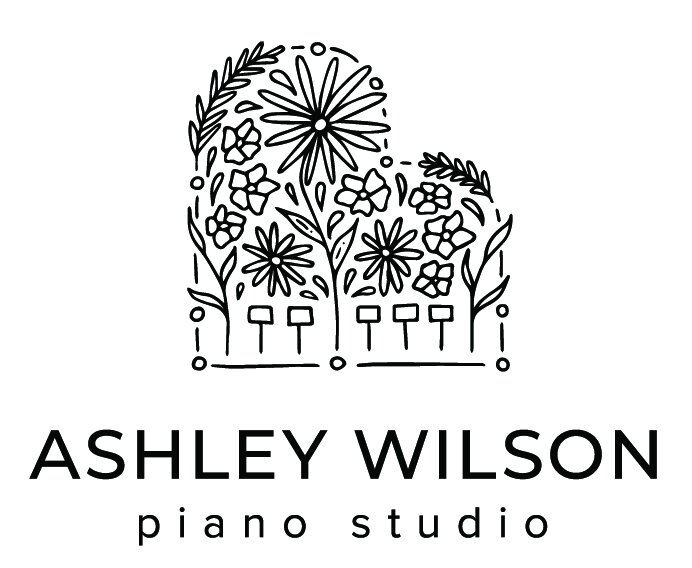A Long, Slow Look
Using Slow Looking Techniques to Discover Music History
Because the summer schedule includes two group lessons each week, it’s my favorite time to take a deep dive into concepts that we don’t always have time to cover extensively in private lessons. This summer, we built upon slow looking strategies that students have already been using and listened to music from different historical eras to discover the broad characteristics of each one.
A new way to think about music history
Does memorizing dates, composers, and representative works from different eras really build functional knowledge of music history? That was my guiding question for the summer. My least favorite way to teach is by simply telling—I would much rather give my students the chance to make discoveries through carefully-designed activities that allow them to experience concepts before diving into the nitty-gritty.
Some considerations for Teaching Music History to Children
Musical eras did not exist in a bubble or start and end as abruptly as timelines make them appear. Beethoven is the quintessential example of this, having bridged the Classical and Romantic periods.
I am not so concerned with knowing dates yet. It is difficult for an 8 year-old to understand how long ago 300 years was, which is completely age-appropriate. We use 1776 as a reference point because my students know that year from…wait for it…Hamilton! We refer to eras as being either before the U.S. became a country or after the U.S. became a country.
We know what something is by what it’s not. Teaching musical eras independently of each other doesn’t make sense to me; there’s too little room for comparison and contrast.
With all this in mind, I wanted to create an immersive group lesson experience that could be taught non-chronologically, used the elements of music as a springboard for discovery and discussion, had virtually no lecturing (woohoo!) and enabled students to make their own predictions. I actually wanted the class to teach itself.
Start with Art
Music, art, and architecture are embodiments of what was valued and seen as beautiful at the time they were created. As such, we can look at them conjunctly to learn about an era. We started all of our discussions by slow looking at artwork and architecture from two adjacent historical eras—it’s easier for kids to describe the concrete things they see in art first. We used the Ten Times Two strategy:
Look at the image quietly for at least 30 seconds. Let your eyes wander.
List 10 words or phrases about any aspect of the picture.
Repeat steps 1 and 2: Look at the image again and try to add 10 more words or phrases to your list.
The images below show Baroque and Classical art. Take a slow look at them, then keep scrolling to see what my students had to say.
Giovanni Battista Gaulli, Triumph of the Name of Jesus, ceiling fresco, Church of the Gesù, Rome, 1661–1679
Jacques-Louis David, Oath of the Horatii, oil on canvas, 1784-1785
Some of the words and phrases that my 7-13 year old students came up with include:
Baroque
a lot going on, busy, etc.
you can find lots of details in one little part
many students noted that things were nested “there’s a square, with a circle in it, with a flower in it, with carvings on it, etc.”
“it must have taken a long time to make”
extravagant, extreme
detailed, frilly, fancy
“everything is gold”
things look “heavy”
and, of course, everyone asked how they got paintings onto the ceiling! :)
Classical
fewer things, simpler, “the room is simple and clean”
balanced
bright
more contrast, “the people stand out more”
not everything is equally important; many students thought the man in the middle was the most important character
a few students noticed the symmetry of the arches in the background or recognized the style of columns (doric)
many students imagined what could be in the background behind the arches
students also wondered why the women on the right looked sad, tired, etc.
We even looked at keyboard instruments from the Baroque and Classical eras to see how the different aesthetics were realized.
A Baroque harpsichord. Image source
Reproduction of a pianoforte; original was built ca. 1800 Image source
The Pendulum of Style
Students started noticing on their own that that there were a lot of “opposites” between the artworks, which is exactly what I wanted them to notice! That’s not to say that there are not similarities between Baroque and Classical styles—we’re just thinking about the very big picture. This is when we grouped their words and phrases on either side of a pendulum. Each era is a reaction to the one before it, so a pendulum that swings between extremes is fitting.
From here, we started learning how all these words and phrases translate to the elements of music…but that’s a blog post for another day!
Project Zero is a goldmine of thinking routines, slow looking strategies, question starts—all the tools you need to nurture a culture of curiosity, inquiry, open discussion, and discovery.
The concept of Slow Looking is explored in Dr. Shari Tishman’s book, which you can read more about here.






